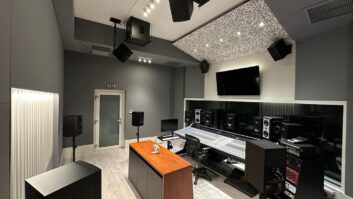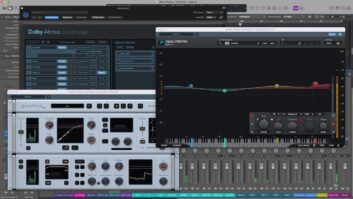
Athens, Greece (November 5, 2025)—Roberta Flack was already well into a successful career when she released both her best-selling album, Killing Me Softly, in 1973, and Feel Like Makin’ Love, which spawned her third and final Number 1 hit on Billboard’s Hot 100 chart with its title track, the following year. Both albums have now been mixed in Dolby Atmos by Pat Mavromatis at his immersive Living Room Studios in Athens, Greece, and were released to streaming in September by Rhino Records.
“The records took about a year to mix,” Mavromatis says. All the original tapes—the masters and multitracks, including previously unreleased songs and multiple takes—had already been faithfully digitized, but the challenge, as with any tape transfer, was that the speed drift of the original tracking and mixdown machines had also been captured and needed to be corrected. That challenge was exacerbated by having to reconstruct vocal and instrumental tracks, and even entire song comps, from multiple tapes.
“You’re trying to create one steady digital file out of that whole mess. It’s a nightmare, but it’s a lot of fun,” he says. “I use [Steinberg] SpectralLayers for editing and WaveLab Pro for time-stretching. I love any software that gives me a chance to stretch things precisely—say, 123.45678%, not just 123.5%.”
Further complicating matters, Mavromatis was building his facility, with studio designer Jeff Hedback of HdAcoustics, while working on the albums. The 11,500-cubic-foot tracking space still needs a few finishing touches, but he is already using it, including to add immersive ambience and natural reverb to reamped sources.
Flack, who passed away in February at the age of 88, is considered one of the originators of R&B’s “quiet storm” sound. A child prodigy and a classically trained pianist, she was a gifted vocalist and arranger, accumulating four Grammy wins from 14 nominations during her lifetime.
“On ‘Killing Me Softly With His Song,’ there’s 30 or 40 backup vocal tracks,” Mavromatis notes. “She doesn’t just do thirds, fifths, sevenths and ninths; it’s a whole fugue. It sounds unbelievable. You can tell from the way they’re using the reverbs they wanted to get immersive and put her up front—and I got a chance to do that in real life, 50 years later.”
Malta Gets its First Dolby Atmos Studio
His approach was essentially to widen the image. “My room is 9.1.4, and I use the wides a lot,” he explains. “A lot of the backup vocals were all around. A lot of the percussion was up top.” As for horns, “If they were part of the song, I would have them in the surrounds with a little bit trickling to other speakers, so I can get that glue. In instances where there were just horn stabs or something like that, I might have some of them only in the heights.”
Mavromatis panned Flack’s keyboards— acoustic piano and Fender Rhodes—to the rear. “It sounds fantastic, and you also get that feeling in headphones in the binaural version,” he says.
“Killing Me Softly With His Song” is arguably Flack’s best-known song. It spent five weeks at Number 1 in the U.S. and earned her Grammy Awards for Record of the Year and Best Female Pop Vocal Performance, as well as a Grammy for Song of the Year for the credited songwriters, Charles Fox and Norman Gimbel.
Discover more great stories—get a free Mix SmartBrief subscription!
“The song is a classic, but the kick drum blows everything out of the water,” Mavromatis says. “It’s loud and it’s panned to the right, and the bass is panned to the left. That’s a bit extreme, but it worked. I kept all that, but I Atmos-ized it, so you get the original feel.” It was the only song on the original album mixed by Gene Paul, son of Les Paul.
Mavromatis brought a variety of reverb and up-mixing plug-ins to bear on the project. “I used the Penteo Pro+ plug-in a lot for ambiences; I spread them all over. If something wasn’t working, I would make a copy of it, throw the Penteo Pro+ on it, then spread it apart to de-correlate it so it doesn’t sound like a huge, mono thing.” Fab Filter’s Pro-Q EQ and Saturn saturation plug-ins and Eventide reverb plug-ins are “everywhere,” he adds.







